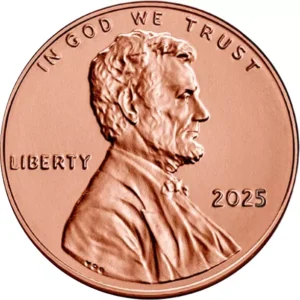 Some of my favorite sayings have to do with pennies: “A penny for your thoughts.” “Find a penny and pick it up and all the day you’ll have good luck.” “Look after the pennies and the dollars will take care of themselves.”
Some of my favorite sayings have to do with pennies: “A penny for your thoughts.” “Find a penny and pick it up and all the day you’ll have good luck.” “Look after the pennies and the dollars will take care of themselves.”
One of my favorite Little Golden Books of all times is “Five Pennies to Spend,” written by Miriam Young and published in 1955, when I was just a wee one. It tells the story of a little boy named John whose mother sends him to the store to buy a loaf of bread. She gives him five pennies to spend on himself. Instead of candy, John buys a gift for each of the five animals—a dog, a cat, a squirrel, a bird and a pig–he met on his way to the store. It’s a wonderful story of empathy and kindness and friendship that my children and grandchildren have also enjoyed.
One of my favorite real-life penny stories involves the Great Smoky Mountains National Park. Because the half-million acres that eventually became the park were privately owned, they had to be purchased before the park could be established. The state governments of Tennessee and North Carolina gave money. So did corporations and private individuals. But the best part is that, in an effort called “Pennies for the Park,” hundreds of school children dropped hard-earned pocket change into jars on their teachers’ desks to contribute to the cause.
The next story is not quite so uplifting. It involves a man I met years ago on an online dating site. He claimed to be a coin dealer who’d made a fortune trading for valuable pennies. We met at noon at the Cracker Barrel in Crossville. He arrived on a sorry-looking motorcycle and told me he loved that bike so much he didn’t even have a car. He asked did I care if we sat out on the porch instead of going inside so he could smoke. Before I could answer, he settled into a rocking chair and lit one cigarette after another while he talked and talked and talked about himself. He never asked if I wanted to play checkers. He never mentioned buying my lunch or even a glass of iced tea! When his voice finally grew tired, he jammed his bean-pot helmet back onto his head and climbed on his Harley and roared away and I was not one bit sorry to see him go.
Now to the real issue at hand. The United States Treasury recently declared they’re phasing out the penny, which has been in circulation since 1793. Because the cost of producing a penny is almost four times what the coin is worth, it doesn’t make financial sense to make them anymore. Pennies were once 100 percent copper but that percentage has fallen to 2.5 percent. The remaining 97.5 percent is zinc, which has become increasingly expensive. Once the supply of penny “blanks” (flat round pieces of metal that haven’t yet been stamped) is used up, which will happen early next year, no more pennies will be manufactured.
Existing pennies will still be legal tender, but it’s likely they’ll gradually disappear from circulation as the years pass. Merchants who deal in cash will round prices up or down—call me crazy, but I’m guessing up—to the nearest nickel.
I suppose that, after a while, no one will understand once-familiar sayings about pennies or will want to read about young John and his animal friends or will realize what a sacrifice it was when mountain children donated pennies to a worthy cause. But who knows? It might also mean that my would-be-boyfriend on the motorcycle really and truly has made a fortune because of penny scarcity.
I’ve always hoped that one day I’d get a chance to write about him. Now, at last, I have.
(May 31, 2025)